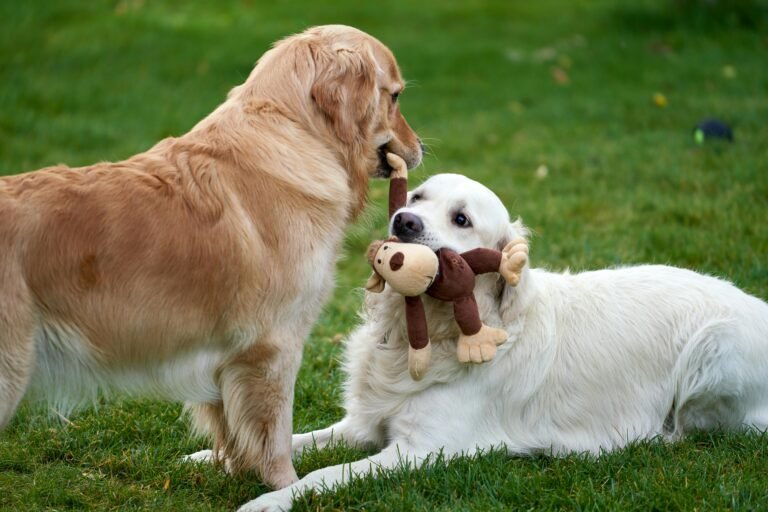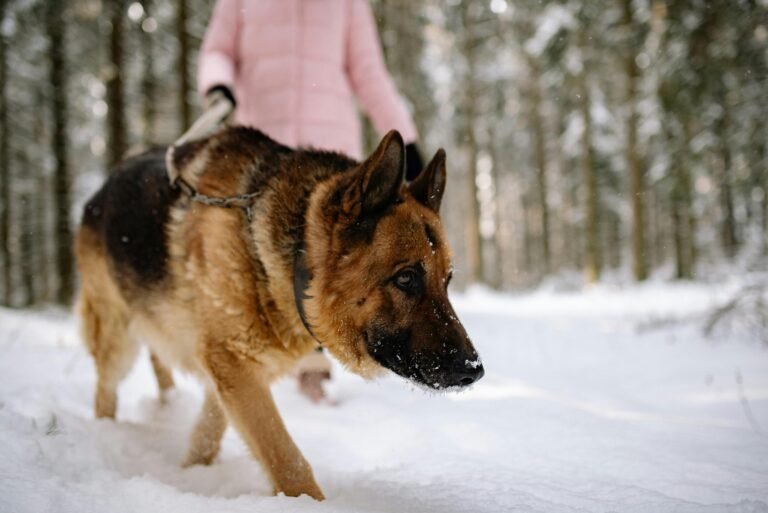Introduction
You’re sitting on the couch, and suddenly your dog presses their body against your leg — not a full jump-up cuddle, just a steady, comforting lean. Maybe they sigh, maybe they look up at you, maybe they just rest there quietly. For dog lovers, it’s one of the sweetest moments of connection. But what does it really mean when your dog leans on you? Is it affection, protection, or something deeper? The answer blends love, psychology, and instinct — and it reveals just how much trust your dog places in you.
The Lean: A Canine Love Language
Leaning is one of the most subtle yet meaningful ways dogs communicate. It’s their version of a hug — a tactile way of saying, “I feel safe with you.” In the animal world, physical contact is a sign of security and bonding. When your dog leans on you, they’re sharing vulnerability and closeness. They’re not just showing affection — they’re reaffirming connection.
Unlike humans, dogs don’t express love through words or gifts. They express it through touch, presence, and body language. That gentle pressure against your leg? It’s trust, distilled into one quiet gesture.
1. Seeking Comfort and Security
One of the most common reasons dogs lean is simple: comfort. Just like children seek physical reassurance from parents, dogs lean on the people who make them feel protected. The pressure of leaning creates physical grounding — it lowers heart rate, eases anxiety, and strengthens emotional safety.
This behavior often appears during stressful moments — thunderstorms, vet visits, or noisy environments. By leaning into you, your dog is essentially saying, “You make me feel safe. Stay close.”
2. A Sign of Affection and Bonding
Leaning is one of the purest forms of canine affection. It’s not dominance or dependence — it’s closeness. Dogs evolved as pack animals, thriving on physical contact with their group. In the wild, pack members sleep against each other for warmth and protection. That instinct hasn’t gone away; it’s simply shifted toward you — their chosen “pack.”
When your dog leans on you during quiet moments, they’re mirroring the same comfort-seeking behavior that bonds littermates and families. It’s their way of saying, “We’re together, and that feels right.”
3. Expressing Trust and Vulnerability
For a dog to lean, they must surrender part of their balance — literally putting their weight in your hands (or lap). That act alone shows deep trust. In canine social behavior, exposing oneself physically — leaning, rolling over, lying close — are gestures of vulnerability that say, “I know you won’t hurt me.”
When your dog leans on you calmly, they’re placing emotional faith in you as their protector and safe base. It’s one of the most profound nonverbal compliments a dog can give.
4. Protective Instinct and Loyalty
Sometimes, leaning serves a dual purpose: connection and protection. Certain breeds, especially herding or guardian types like German Shepherds, Great Pyrenees, or Boxers, use body contact to keep their humans within “safe range.” It’s not possessiveness — it’s watchful affection.
When your dog leans on you while scanning the environment, they’re anchoring themselves to you while staying alert. It’s their instinctual way of saying, “I’ve got you covered.”
5. Attention-Seeking Behavior (The Gentle Kind)
Let’s be honest — dogs are smart. Many learn that leaning earns pets, smiles, or a soft “aww.” Over time, they may use it as a polite request for attention. But unlike jumping or barking, leaning is gentle and respectful. It’s their way of saying, “Hey, remember me?”
If your dog leans and looks up at you with relaxed eyes or a wagging tail, they’re inviting affection — not demanding it. It’s one of the sweetest forms of communication in the dog world.
6. Stress Relief Through Physical Contact
Physical touch releases oxytocin — the same “love hormone” that strengthens bonds between mothers and infants. Both humans and dogs experience a rise in oxytocin during affectionate contact. When your dog leans on you, that shared moment triggers a hormonal feedback loop: they feel calm because you’re calm, and you feel loved because they’re close.
In this way, leaning isn’t just emotional; it’s biological therapy. Your heartbeat and scent regulate theirs — it’s connection at its most primal level.
7. Leaning vs. Dominance: Debunking an Old Myth
Some old-school training theories once claimed that leaning was a sign of dominance. That’s been thoroughly debunked. True dominance in dogs involves controlling access to resources — not sharing closeness. A dog that leans gently is seeking safety, not control.
If anything, the opposite is true: confident, secure dogs are more likely to initiate contact calmly, because they trust the relationship. Leaning is love, not hierarchy.
8. When Leaning Might Signal Anxiety
While most leaning is affectionate, sometimes it can reflect insecurity. Dogs with separation anxiety or fear of loud noises may press their bodies against you more insistently, even trembling or panting. In those cases, leaning is self-soothing behavior — like a child clinging to a parent during stress.
If your dog’s leaning is accompanied by pacing, whining, or excessive clinginess, it’s a good idea to support them with calm energy and gradual independence-building exercises. The goal is to help them lean for love, not survival.
9. The Difference Between Leaning and Laying On
Leaning is often subtle — standing or sitting beside you, applying gentle pressure. Laying on, on the other hand, is full physical contact. Both express affection, but leaning tends to occur more in moments of awareness — when your dog is alert but relaxed. It’s their way of maintaining touch while staying connected to the world around them.
How to Respond When Your Dog Leans on You
The best thing you can do when your dog leans on you? Lean back — emotionally, if not literally. Slow your breathing, speak softly, and enjoy the moment. It’s an opportunity to deepen the bond without words.
- Offer gentle pets or strokes, especially along the shoulder or chest — these areas reinforce calm connection.
- Don’t pull away abruptly, unless the setting is unsafe (like when cooking or carrying something).
- Respect their needs: if the lean feels anxious, reassure; if it feels calm, reciprocate.
For your dog, these moments of touch are emotional anchors — simple gestures that say, “We’re okay.”
What It Says About Your Relationship
When your dog leans on you, it’s not about neediness — it’s about belonging. It means you’ve become their source of security and affection. They trust you enough to relax, to share space, to be still together. In a world full of distractions, that kind of quiet companionship is sacred.
It’s also mutual healing. Just as your dog finds comfort in your presence, studies show that humans who share regular affectionate contact with pets have lower blood pressure, reduced stress hormones, and higher happiness levels. When your dog leans on you, you’re both saying, without words, “You’re my safe place.”
Conclusion
So, why does your dog lean on you? Because it feels right. It’s love, comfort, trust, and instinct all wrapped into one small act of connection. They lean because you make them feel safe — and because, deep down, you feel the same way. That shared stillness isn’t just affection; it’s understanding. It’s the quiet reminder that sometimes, the strongest bonds need no words — just a gentle lean and a heartbeat close by.



